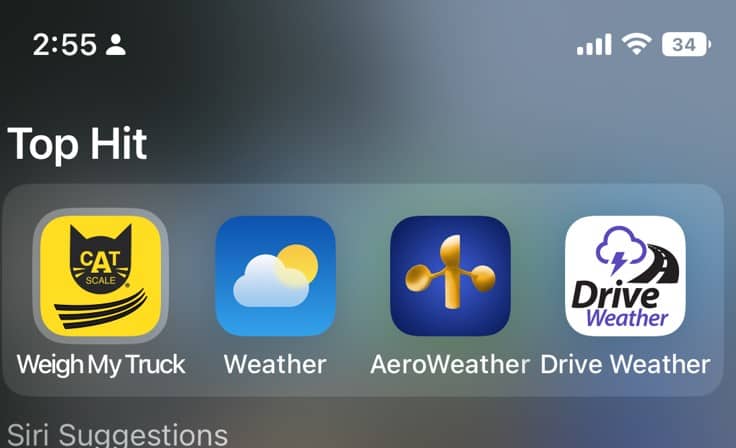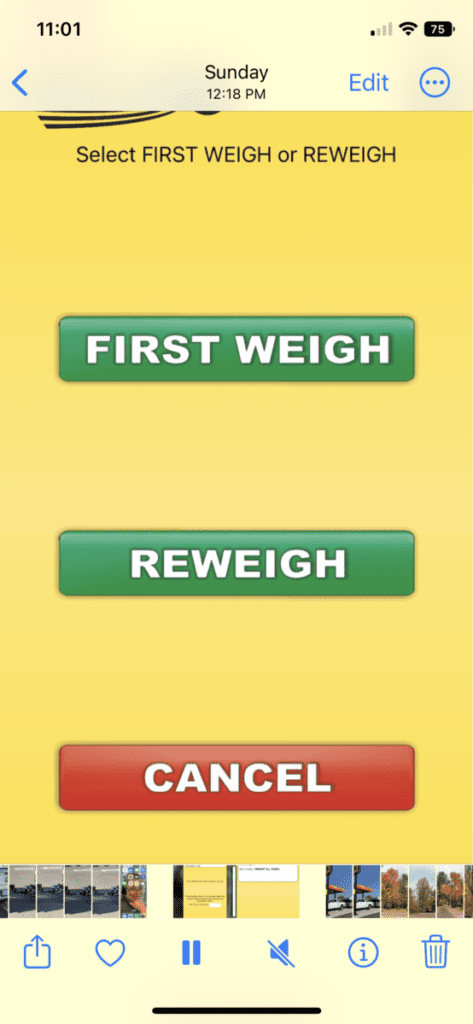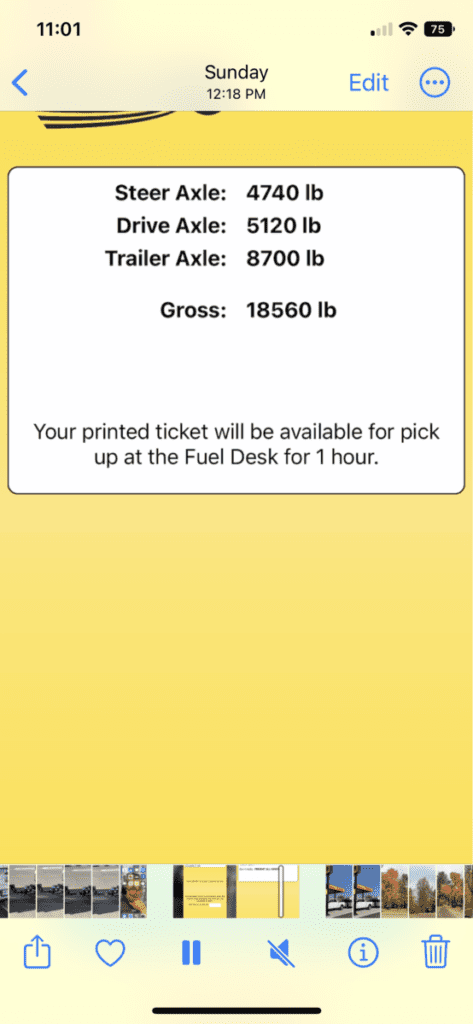
Before you go, check this out!
We have lots more on the site to show you. You've only seen one page. Check out this post which is one of the most popular of all time.
At some point several years ago, I noticed a twinkle in my wife’s eye as we talked about using an RV to travel to National Parks and other fun destinations. As we explored the topic, we imagined what it would be like to travel in a class A, then a class C, then settled on a bumper-pull RV.
For each class, we saw several common tasks that we would have to master, but we also realized that tasks we did not know about would eventually come into view. Calculating tongue weight was one of those tasks.
In this article, I will show what I learned along the way. I will also illustrate an issue with my tongue weight that would have gone unrecognized with scales I refer to at the end of this piece. I’ll show why it makes the CAT Scale my favorite method for calculating tongue weight.
CAT Scale partners with truck stops to provide accurate and certified weights for professional truck drivers. There are over 2,000 locations throughout the U.S. and Canada. RVers can use the CAT scale to capture the weights required to calculate their pin or tongue weights.
I’ll describe some of the terms used by CAT Scale, then we’ll look at my routine.
Every CAT scale has a “weighmaster” on the premises. Weighmasters are the people that users will interact with if not using the WeighMyTruck app.
A user will pull onto the scale, push the button on the intercom, and will hear the weighmaster answer. The weighmaster will ask if you need a “first weigh” or “reweigh.”
The first time I went to a CAT Scale, I answered the “first weigh” question with, “Dave.” It took me a minute to realize that they were not asking for my name. I’ll blame it on the intercom speaker quality.
A ”first weigh” is the first weight taken at a specific location in a 24-hour period. The “reweigh” is every weight taken at that same location within 24 hours of the first weigh. At the time of this writing, the cost for each reweigh is about ¼ the cost of the first weigh.
The weights for each pass over the scale are printed inside and must be picked up and paid for at the counter.
I use CAT Scale’s WeighMyTruck app because it detects my location and I can make three passes on the scale without any interaction with the truck stop’s weigh master. I pay for each weigh through the app and get my results delivered to my phone and email.

We pull an Airstream with a weight distribution and sway control hitch. When I want to weigh, I ensure that I have a full diesel tank and make sure that all the passengers are in the truck. So, when I pull onto a CAT scale, my rig is configured as it will be traveling down the road.
I capture three weights in this order…
The CAT Scale has three separate weight platforms so when I pull onto the scale, I get individual weights for my steering axle, drive axle, and trailer axle.

Before pulling onto the scale, I open the app and confirm the location, accept the “first weigh” fee, and pull onto the scale. Less than a minute later, I have the total rig weight with weight distribution on my phone.
Once I have the results, I pull off the scale and out of the way of other traffic to release the tension on my weight distribution bars. Then, I approach the scale again for my first “reweigh.” The app sees me at the same CAT Scale location within a 24 hour period, so it gives me an option for a reweigh. After clicking the “reweigh” button, I accept the fee, pull onto the scale as before, and let the app do its thing.


Then, I pull off the scale, find a place to drop my RV, and disconnect for my final pass through the scale.
As I approach the scale, the app sees me at the same location, so I have another opportunity to select “reweigh.” I pull onto the scale again and wait for the scale to capture the numbers for my tow vehicle alone and pull off the scale after the results are delivered. Then, I reconnect my RV and do that math. It looks like this…
We need three numbers to get a meaningful tongue weight. The weights we need are…
We get the Tow Vehicle Weight by adding the steering axle and drive axle weight for the tow vehicle without an attached trailer.
To get trailer weight, subtract the tow vehicle weight from the rig’s gross weight (no weight distribution).

To calculate tongue weight, add the steering and drive axle weights for the tow vehicle only. Then, add the steering and drive axle weights for the tow vehicle with the trailer attached (no weight distribution). Finally, find the difference between the two.

Tongue weight by itself paints an incomplete picture.
Remember that tongue weight should fall between 10% and 15% of the total trailer weight. Anything outside of that range can lead to unsafe towing conditions. So, I need to calculate the tongue weight percentage to my trailer weight.
To calculate Tongue Weight Percentage, divide the tongue weight by the trailer weight.

Whoops. Can you see why tongue weight by itself is helpful, but why tongue weight alone is only part of the information we need? This result shows that I am under the 10% threshold for tongue weight.
What I learned along the way is that the tongue weight percentage is the end-goal. Too many of us stop looking once we get the tongue weight. Tongue weight by itself is not enough.
In the first two articles of this series, I did not have the actual trailer weight for three of the four scales tested. I could measure tongue weight only. While that was helpful, I walked away with the tongue weight and not the most meaningful number.
Tongue weight by itself will not tell us if we are within the 10%-15% window recommended for safe towing.
We need the trailer weight to calculate percentage. The CAT Scale is the fastest, least expensive, most available, and easiest method I found to capture the trailer weight.
The CAT scale provides information that I use for other evaluations as well. For reference, I drive a 2019 RAM 2500 diesel and we pull a 30ft Airstream Classic.
I wrote two other articles that show a comparison of common scales for calculating tongue weight and the process used for each one. My scale comparison article can be found here. The processes and lessons I learned by using each scale can be found here.
The CAT Scale is my preferred method for calculating tongue weight and its percentage to total trailer weight because I get actual data in real time.
I hope that you found this article helpful and encourage you to consider using a CAT Scale at least once to calculate tongue weight and tongue weight percentage. Good luck and…
See you down the road!
NomadicNeighborhood is a participant in the Amazon Services LLC Associates Program, an affiliate advertising program designed to provide a means for sites to earn advertising fees by advertising and linking to Amazon.com. We also participate in other affiliate programs which compensate us for referring traffic.
[wpcode id="2133"] This article is part two of an experiment I conducted to see which scale and process was best for me to calculate tongue weight. In my first article, I evaluated four...
[wpcode id="2133"] This is an updated version of my original article. In the original, I used four scales to measure the tongue weight of our 2019 25RBT Flying Cloud. We took delivery of...